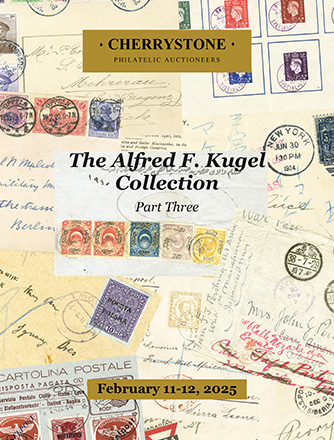The Alfred F. Kugel Collection, Part Three
February 11-12, 2025
Welcome to the third sale dedicated to material meticulously assembled by Alfred "Al" F. Kugel over a multidecade effort to build an expansive collection of philatelic and postal history items focused on military conflicts of the 19th and 20th centuries.
Upon his passing in 2022, Al Kugel entrusted the American Philatelic Society (APS) with his entire philatelic estate, including 180 boxes of philatelic literature and military postal history material. Much of the material offered across the first three sales has not appeared on the market for decades, many of the items originally acquired through Cherrystone Auctions, where Al was a frequent and valued client. Now, this exceptional collection returns to the marketplace, offering collectors a rare opportunity to acquire significant pieces enriched by Al's extensive scholarship and research.
Al's collection spans global conflicts and military mail from the late 19th century through modern times, with a focus on the break-up of Austrian, German, Ottoman Empire and Russian Empires, military campaigns in the Balkans, with Bosnia & Herzegovina, Serbia and Montenegro, Allied Interventions in China during the Boxer Rebellion and in Russia during the Civil War as well as the two World Wars and their aftermaths. An extraordinary array of regional Military and Naval mail from those violent actions form the core of Al's exhibits, China, Japan, and other nations.
This sale will take place via CherrystoneLIVE




